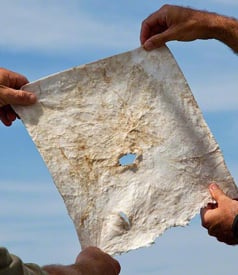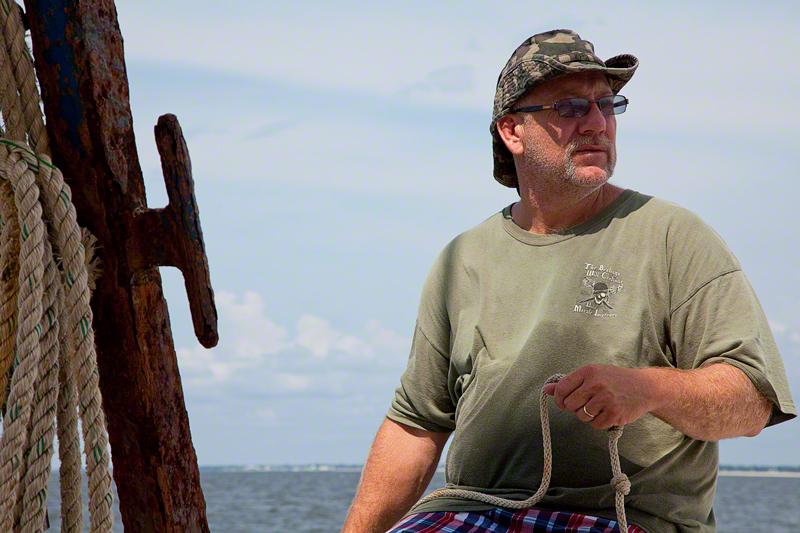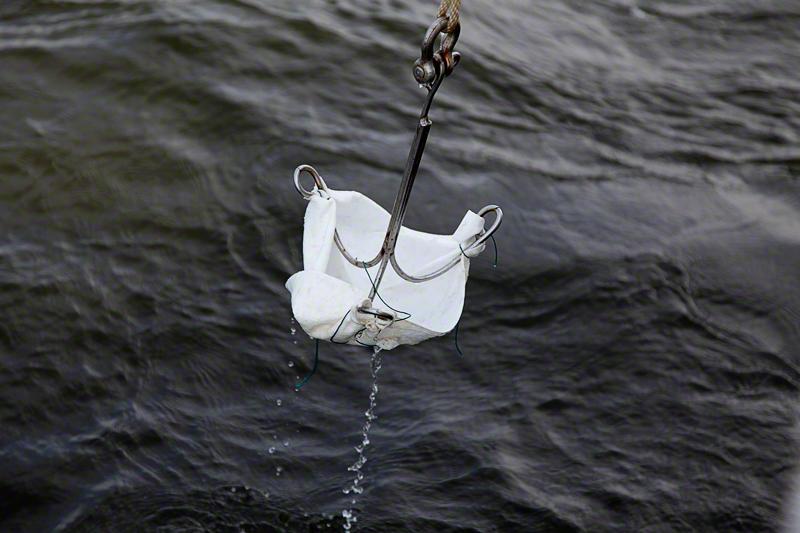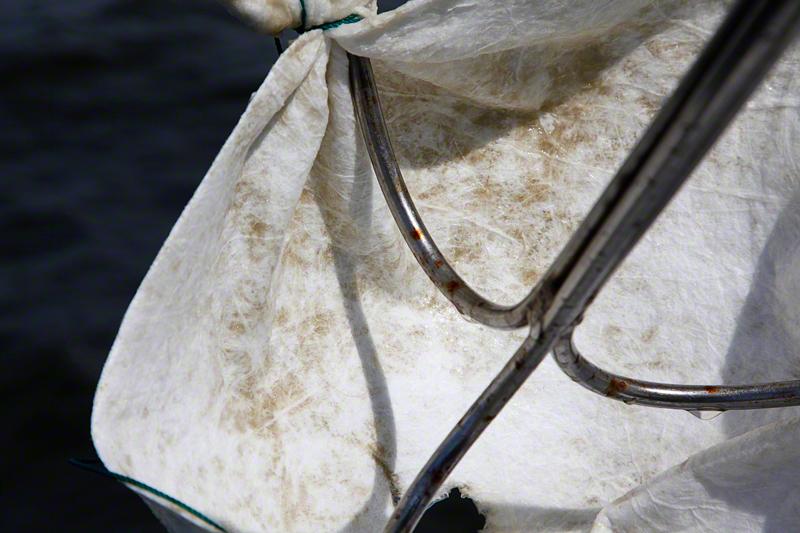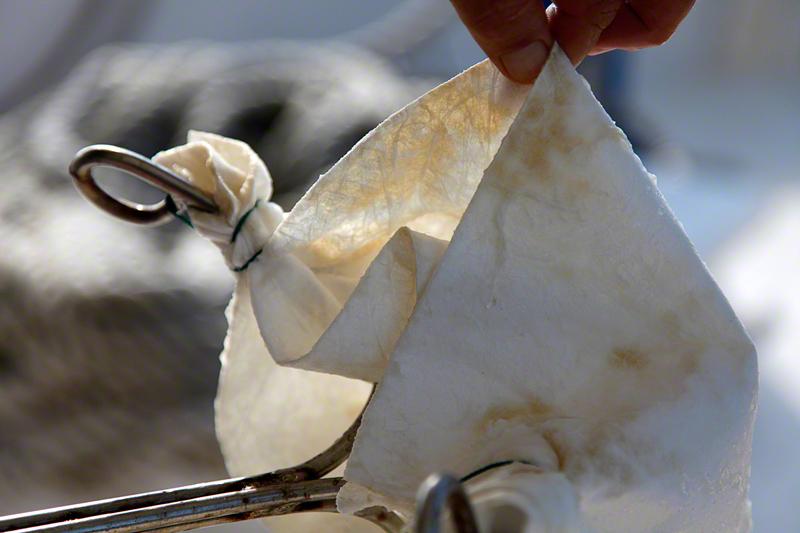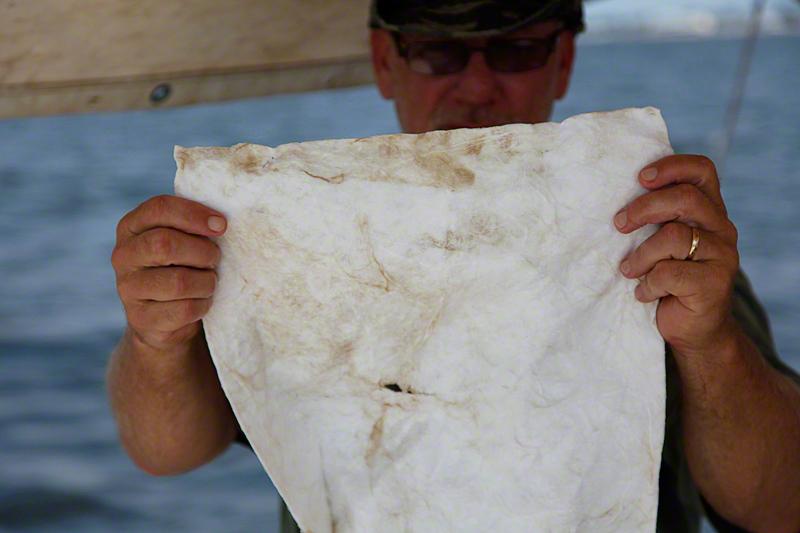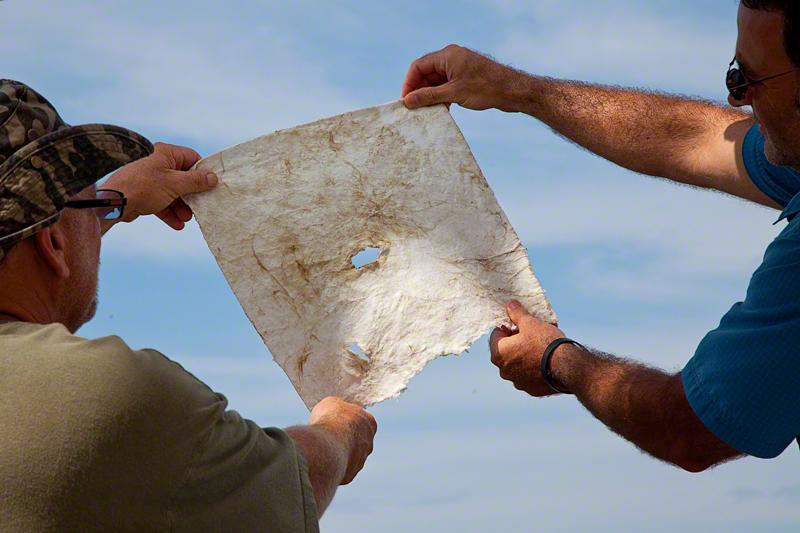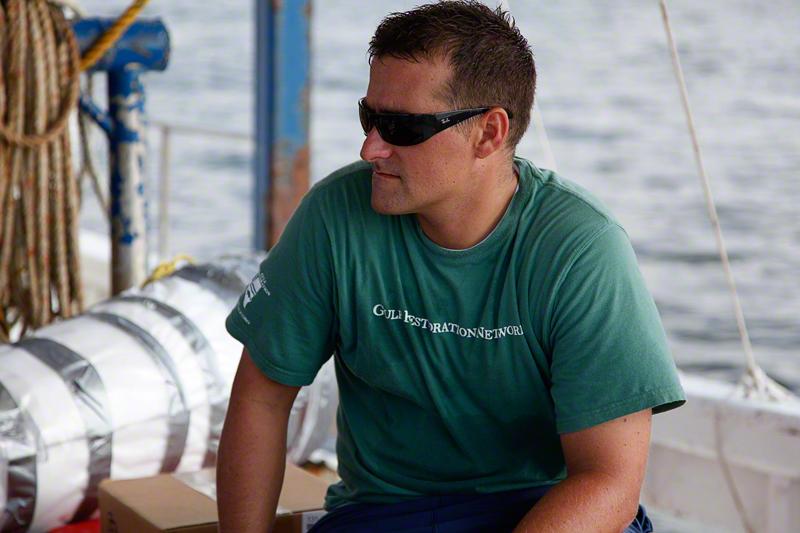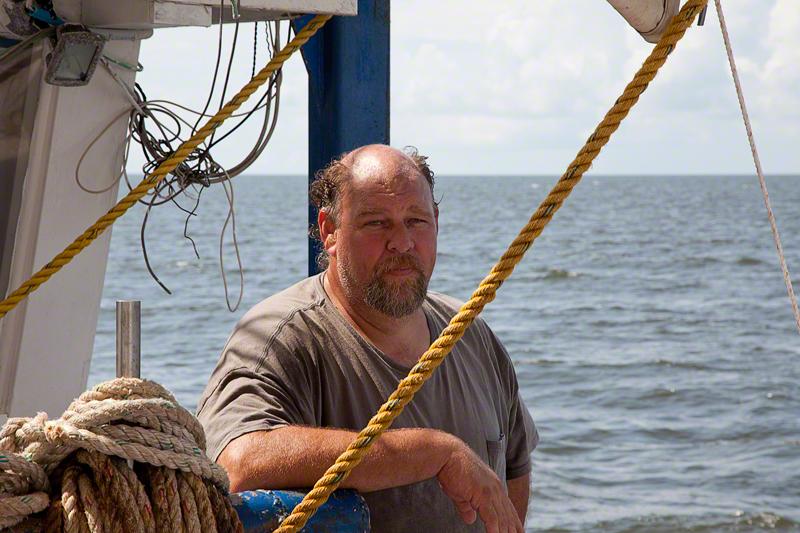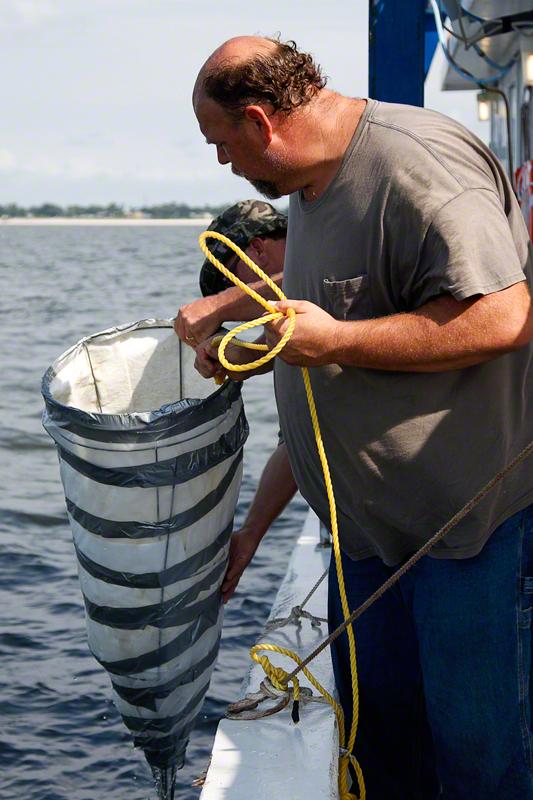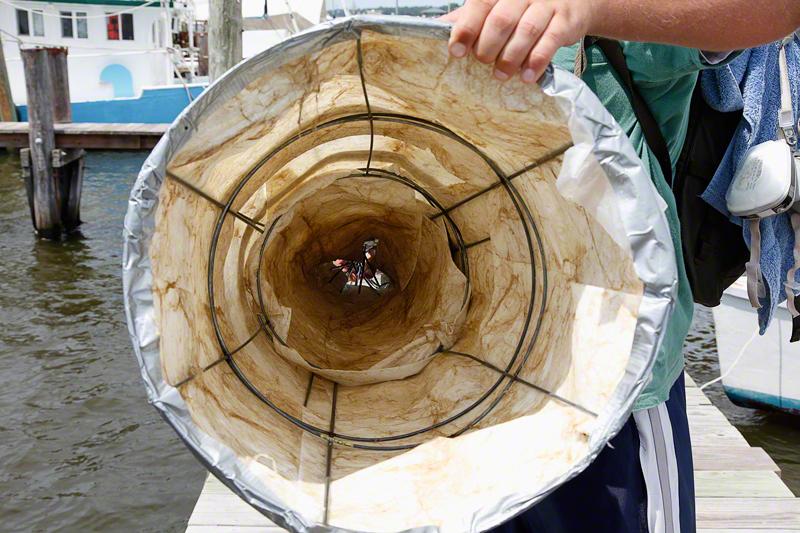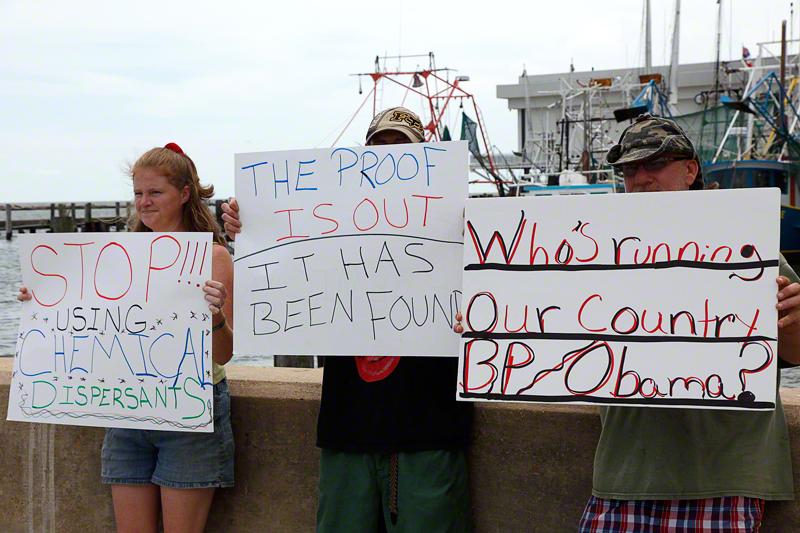For Rebirth Brass Band leader Phil Frazier, 'recovery' refers to more than a hurricane
Published: Sunday, August 29, 2010, 5:01 AM Updated: Sunday, August 29, 2010, 1:01 PM
Rebirth is New Orleans. New Orleans is Rebirth. For 27 years, Phil Frazier has sustained the Rebirth Brass Band as its founder, captain, sousaphonist and spirit. He and his bandmates have persevered through dramas large and small across multiple New Orleans story lines, from crime to Carnival, gangsta rap to Kermit Ruffins.
 Chris Granger / The Times-PicayunePhil Frazier co-founded the Rebirth Brass Band in 1983, and led it through Hurricane Katrina and his own personal storm.
Chris Granger / The Times-PicayunePhil Frazier co-founded the Rebirth Brass Band in 1983, and led it through Hurricane Katrina and his own personal storm. Members have gone to jail and died too young. They also have generated immeasurable joy around the globe.
Individually and collectively, the men of Rebirth struggled through Hurricane Katrina and its aftermath alongside fellow New Orleanians, even as they contributed to the soundtrack of recovery.
But Katrina, as it turns out, would not be the defining crisis for Phil Frazier. That would come later.
His personal crisis would follow a plot line familiar to Katrina veterans. It struck with little warning. It exposed and exploited areas of neglect. It was terrifying, debilitating, apocalyptic. For a time, all appeared lost.
Friends, family and strangers would rally in support. Recovery would start slowly, haltingly, then pick up speed. Much progress would be made.
But Frazier, like his city, would never be quite the same. The legacy of the crisis remains, demanding vigilance to insure history does not repeat itself.
Through it all, Frazier, like his city, drew comfort, strength and inspiration from a familiar source.
From Rebirth.
On a rare day off, Phil Frazier settles in at the dining room table of the tidy two-story Gentilly duplex he shares with his companion of 16 years, Linda Tapp Porter, president of the Lady Buck Jumpers Social Aid & Pleasure Club.
He is 44. The gold star on his front tooth is a tribute to his father, who wore one just like it. Frazier married and divorced young. The youngest of his children recently graduated from high school. He is a grandfather.
He sports a 20th anniversary Rebirth T-shirt decorated with the band’s first logo — a horn busting out of an egg, drawn by Ruffins. Even on a day off, his cell phone — his number, in part, spells “TUBA” — buzzes constantly. He is Rebirth’s nerve center, organizing the band’s affairs with a new iPad.
He and his younger brother, bass drummer Keith Frazier, founded the Rebirth Brass Band with Ruffins while still students at Joseph S. Clark Senior High School. They played for change in the French Quarter, aspiring to duplicate the success of the mighty Dirty Dozen Brass Band, then the city’s pre-eminent brass band.
 Danny Bourque / Times-Picayune ArchiveThe core of the Rebirth Brass Band, photographed in 2008 at the Maple Leaf, is, from left, Keith Frazier, Glen Andrews, Derrick Tabb, Derrick 'Khabukey' Shezbie, Phil Frazier, Chadrick Honore, Stafford Agee and Vincent Broussard.
Danny Bourque / Times-Picayune ArchiveThe core of the Rebirth Brass Band, photographed in 2008 at the Maple Leaf, is, from left, Keith Frazier, Glen Andrews, Derrick Tabb, Derrick 'Khabukey' Shezbie, Phil Frazier, Chadrick Honore, Stafford Agee and Vincent Broussard. Rebirth, Frazier says, specializes in “junk music — jazz and funk put together. It’s clean, but unclean.”
They paid their dues in social aid and pleasure club parades and late-night gigs at neighborhood bars. Eventually, they toured the globe — Japan, Turkey, Africa, Europe more times than they can remember. They released albums and made decent livings as musicians. Their “Do Whatcha Wanna” and “Feel Like Funkin’ It Up” are now Mardi Gras standards.
Members came and went. These days, at full strength, Rebirth includes the Frazier brothers, Vincent Broussard, Stafford Agee, Chadrick Honore, Derrick “Khabukey” Shezbie, Derrick Tabb, Glen Andrews and Corey Henry.
The backline rhythm section drives the band, and Phil Frazier drives the rhythm section. “It’s a spontaneous thing,” he says. “I play from the heart.”
On stage, he percolates and pumps like a piston. His tuba — technically, it is a sousaphone — weighs around 28 pounds.
“I play the horn so much, it’s part of my body now,” Frazier says. “It probably affects me in some way that I don’t know.”
As a young musician, Frazier sometimes slept alongside his tuba. His current instrument came courtesy of MusiCares, the charitable arm of the Grammy organization, one of many entities to shower musicians with largesse after Katrina.
Frazier did not lose his old horn to the storm. Two days before landfall, the Frazier brothers and their families evacuated. At first, they drove toward Georgia, then reversed course for Houston. He reserved space in the car for his tuba: “Always take your horn with you. And it paid off.”
Days later, he gathered his scattered bandmates from Baton Rouge, Baltimore, Alabama, New York. At Houston’s Gypsy Tea Room, they lit up a room filled with New Orleanians desperate for a taste of home.
“It was so awesome,” he says. “People were crying on us: ‘Man, Rebirth’s playing!’ They was happy. We brought part of the city back to them.”
By October 2005, they were back in New Orleans, performing at the reopening of the Cabildo and Tipitina’s on the same day. Ten days later, in early November, they re-established their long-running Tuesday night residency at the Maple Leaf, before leaving on yet another tour.
Frazier’s house — Porter’s son, gangsta rapper James “Soulja Slim” Tapp, bought it for her in the late 1990s, only to be gunned down on the front lawn in 2003 — stayed dry on the high ground of Gentilly Ridge. Blocks away, Keith Frazier was not so fortunate. (He still lives in Fort Worth, Texas, but spends at least as much time in New Orleans as Texas.)
In November 2005, Phil arrived as one of the first residents to return to his Gentilly neighborhood.
“I knew the city was going to come back,” he says. “My heart told me, and my head told me. I had no doubts in New Orleans. I had faith. You can take me out the city, but you can’t take New Orleans out my heart.”
 Scott Threlkeld / Times-Picayune ArchiveThe Rebirth Brass Band, on stage at the 2009 New Orleans Jazz and Heritage Festival presented by Shell.
Scott Threlkeld / Times-Picayune ArchiveThe Rebirth Brass Band, on stage at the 2009 New Orleans Jazz and Heritage Festival presented by Shell. In the months and years that followed, that relationship worked both ways. Rebirth was present, horns and drums in hand, at high-profile milestones in the recovery: The September 2006 reopening of the Louisiana Superdome. The Hornets’ homecoming party in October 2007. The 2008 NBA All-star Game at the New Orleans Arena.
Frazier and his tuba even were featured on the Congo Square poster for the 2007 New Orleans Jazz and Heritage Festival presented by Shell.
If not before the storm, then certainly after, Rebirth assumed the role the Neville Brothers once filled — that of New Orleans’ signature, homegrown, working band.
But on Dec. 11, 2008, Frazier nearly lost a lot more than the band.
He woke up that morning to discover his right side was paralyzed. He tried to get out of bed, and fell.
He called Porter, who sounded the alarm for Frazier’s mother, brother and others to meet her at the house. Frazier managed to walk to the car for the ride to the hospital.
Doctors thought he might have had a mild stroke. He was feeling better, and they sent him home.
That night, he suffered a far more severe episode. He returned to the hospital. This time, he stayed.
High blood pressure had indeed triggered a stroke. He remembers crying, “My career’s over! I can’t play my horn! Why’d this happen to my crazy ass?”
High blood pressure runs in his family. Fourteen months before Frazier was hospitalized, his brother, Kerwin James, the tuba player in the New Birth Brass Band, died of complications from a stroke. (It was during a spontaneous Treme second-line in James’ memory that trombonist Glen David Andrews and Rebirth’s Derrick Tabb were arrested, setting off yet another debate about cultural caretaking in New Orleans.)
With his prognosis uncertain, Frazier’s bandmates convened a meeting at the Howlin’ Wolf, the club owned by the band’s manager, Howie Kaplan. They resolved to employ a substitute tuba player and carry on — with Frazier’s blessing.
“I told them, ‘Please do. Don’t stop the band,’ ” Frazier says. “The band is bigger than any one member.”
But he was determined to rebuild himself, regain his ability to play.
At Touro Infirmary’s rehabilitation center, a therapist suggested that he try to play tuba again. When his fingers touched the brass for the first time in days, “I was so happy. It was like I was reborn.”
His head remembered what to play. His hands, however, had temporarily forgotten. By the third day, he was rolling, after rediscovering the riff to “Feel Like Funkin’ It Up.”
At first, he only allowed his therapist to listen — he did not want his bandmates to hear his sloppy riffs. Soon, he was staging one-man concerts for fellow patients.
A month after his stroke, on Jan. 12, 2009, Frazier checked out of Touro.
The next month, he tentatively returned to the stage. Before reclaiming his place in Rebirth, he tested the waters with the New Birth Brass Band. “They said, ‘C’mon, Phil, we gonna help your therapy.’ ”
After 30 minutes, he called it a night. When he finally rejoined Rebirth for a Maple Leaf gig, he lasted for only the first set, with the Lil Rascals’ Jeffrey Hill, his stand-in, playing alongside him.
Three weeks later, Frazier declared, “I got this,” and went back to work full-time.
 Chris Granger / The Times-Picayune"I'm trying to do it all now," says Phil Frazier. "I want to win a Grammy before I die. I'd rather win a Grammy than get rich."
Chris Granger / The Times-Picayune"I'm trying to do it all now," says Phil Frazier. "I want to win a Grammy before I die. I'd rather win a Grammy than get rich."The episode was “a good wake-up call,” Frazier says. “Not good, but it woke me up.”
He says he was a good therapy patient, willing to work hard and obey instructions. When a member of the Pinstripe Brass Band suffered a stroke, the therapist called in Frazier to deliver a pep talk.
Per doctors’ orders, he has adjusted his lifestyle. No fried foods or pork. No salt. Remove skin from chicken. And no more Jack Daniels and Coke. The changes were necessary, Frazier says, “if I want to live.”
Always motivated, always busy, now he is even more so.
“I’m trying to do it all now,” he says. “I want to win a Grammy before I die. I’d rather win a Grammy than get rich.”
Since Katrina, Rebirth has felt the love like never before. New fans sometimes assume the name “Rebirth” was concocted after the storm. They do not realize 22 years of Rebirth history preceded Katrina.
“People say, ‘Where y’all been?’ ” Frazier says, laughing. “We’ve been right here, every day.”
The band’s profile has never been higher. Snare drummer Derrick Tabb has won national acclaim for co-founding The Roots of Music, an after-school program that tutors 125 young students, free of charge, in music and academics.
In April, the first episode of HBO’s “Treme” opened with the Rebirth Brass Band at a second-line. The Davis McAlary character hears the distant music and observes, “Sounds like Rebirth.”
Sharp-eared viewers realized he could have meant “Rebirth,” with a capital R, or “rebirth,” in lowercase — at this point, the terms are essentially interchangeable.
Moments after being sworn in as mayor on May 3, Mitch Landrieu second-lined down the steps of Gallier Hall to the sound of Rebirth.
The band, like Frazier, like New Orleans, continues to renew itself. Rebirth recently signed a contract with prominent local label Basin Street Records. Frazier and company are rehearsing new material for a CD Basin Street plans to release around Mardi Gras 2011.
Frazier’s speech retains only a hint of his stroke. He still walks with a slight limp, which does not hinder his ability to march in parades or stand on stage at the Maple Leaf for hours on end.
Giving up, he makes clear, was never an option.
“Every day, I keep getting stronger,” he says. “I think about everything I’ve been through, and the band …”
He hesitates, searching for the correct words. Finally, he makes a simple declaration for himself, and for his city.
“I’ve come a long way.”
Keith Spera can be reached at kspera@timespicayune.com or 504.826.3470. Read him online at nola.com/music










